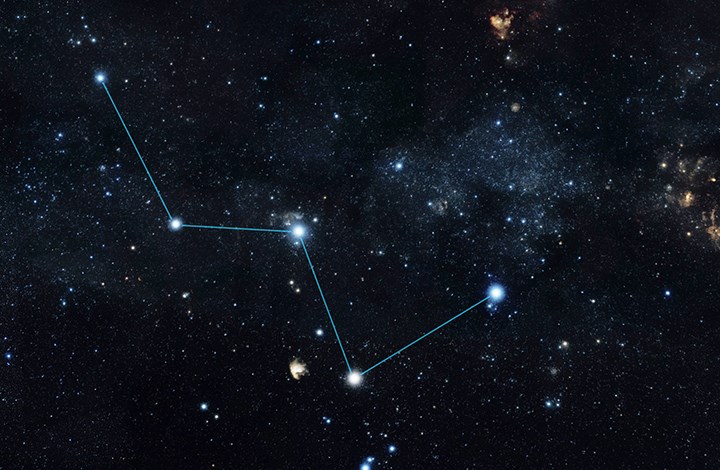
Kristina Bergen | special to the Fitzhugh
Let’s be honest: we’ve had a crazy amount of rain in the Tonquin Valley this summer. And those rainclouds have at times thwarted our attempts to see the night sky.
But on the night of the new moon (and the 4-5 days before and after it) we can experience the most the Jasper Dark Sky Preserve has to offer.
Exactly what is a new moon?
In spite of what you may hear from fans of the Twilight Saga, a new moon is not a romance between a telepathic, glittering vampire and his lunch lady love. It’s much less complicated.
The moon does not emit its own light, but reflects light from the Sun. When the moon is between the Earth and the Sun, the bright side of the moon is facing away from us, which makes it dark. And voila! The absence of “moonlight” gives us a great look at the clear, dark sky of Jasper at its very best.
This month, the New Moon falls on Friday, August 30 at about 4:30 a.m. But if you aren’t up that late, don’t worry. The Moon will appear just as new to your eyes when you see it the following night (or the night before).
Things to look-out for during the new moon:
Andromeda and The Milky Way
No, this is not a story about a girl and her chocolate bar.
Our solar system lives on one of the spiral arms of our home galaxy, the Milky Way. And in Jasper, we look out from our spiral arm to see another spiral arm of same said galaxy sparkling like a river of diamonds trailing across the black velvet sky.
And at a mere 2.5 million light years away, Andromeda is home to a trillion stars, and the closest of the approximately 2 trillion galaxies (give or take a galaxy) that make up our universe. With good eyesight and a dark sky, Andromeda is the most distant celestial object visible to the naked eye. It looks like a hazy white patch, as wide across as a full moon. Through binoculars, you can pick out even more of its oval-shaped structure.
Aurora
You wouldn’t think it possible, but even through the long, bright days of summer, we often see the Northern Lights in Jasper Dark Sky Preserve. Auroras are the physical manifestation of the interaction between the solar wind and the Earth’s magnetosphere. The more particles the Sun spits out during the day, the better the northern lights are for us at night.
About once a week or so (not factoring in cloud cover) you might be able to spot an aurora from the shores of Lake Annette or on the bridge to Pyramid Island (as you cross the bridge to the island, due north is on your right). Keep an eye out for aurora alerts at aurorawatch.ca. Then on a clear dark night, head to one of these iconic spots and look north until you see these curtains of light dance across the sky.
Twinkle, twinkle, Little Star
One of the best treats we get during the new moon is a look at different coloured stars.
Arcturus is a red giant running a temperature of more than 4,000 degrees Celsius. Its lovely orange blush is visible in the constellation Bootes shortly after dark. To see it, follow the arc of stars in the handle of the Big Dipper to Arcturus and look for the bright orange star.
Rigel glows blue-white in the constellation Orion, but you'll have to wait up quite late to see it in August and September. Or put it on your winter-stargazing to-do list. It’s one of the brightest stars of the night sky, twice as hot as our Sun, and 40,000 times brighter.
The striking red Garnet Star a.k.a. Mu Cephei in the constellation Cepheus (yup, that’s Andromeda’s daddy) is an extremely luminous red supergiant. It has an estimated radius of more than one billion kilometres and if it was in our Solar System where the Sun is now, it would extend nearly all the way out to Saturn. In Jasper, this is the largest star visible to the naked eye.
Kristina Bergen is manager of strategic initiatives for The Jasper Planetarium. She can’t resist things that sparkle… especially sparkly greeting cards.



